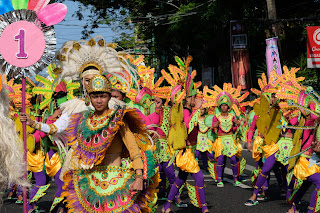jaime e. masagca
How do I personally see languages and dialects?
ENGLISH is formal and official
LATIN is scholarly but snobbish
SPANISH is aristocratic, and fine in cursing when one is really pissed off
MANDARIN sounds so businesslike but may give that feeling that you’re being sold at a bargain
BICOL is the most precise of languages
TAGALOG is so romantic and awesome, particularly the Bulacan and Batangueño dialects.
BISAYA is hilarious, even if the content or subject is not really that funny. It’s the language of the Filipino spirit of resiliency and good nature.
THOSE WHO DO NOT UNDERSTAND CEBUANO MISS A LOT OF HUMOR, THE SIMPLEST LUXURY IN LIFE. INDEED, LIFE IS MORE FUN TO SPEAK AND UNDERSTAND BISAYA.
To begin with, Bicol has a variant dialect in almost every kilometer, from the Visayan influenced in Masbate and Sorsogon, to Tagalog in Camarines Norte, that if you can't be understood one dialect, you have more than a dozen others to choose from.
To give a classic example, "Poon" in Bikol generally means "to start", but could be mistaken for an unspecified tree or plant. So it is acceptable to borrow another Bikol-Sorsoganon word, "BATOG", or even a Daragueño (which is adjacent to Legazpi City), or Camalignon term "mag pun".
That excludes the metasyntactic term "UUNG KWA" in Bicol miraya ('yung ano, kuwan, whatchamacallit,) to center on a term without a direct translation, or has escaped the memory
The "uung kwa" of Bikol leaves more to the imagination.
Where else can you hear a greeting other than "kumusta", such as "AW NOM? (Bikol 1st District of Albay) , and the expression in the 3rd District of wonder or concern, "NAPAWNO? (what happened)”.
In other languages, some words have a definite limit in superlatives. Say, in English, the adjective "beautiful" is limited to "very" or "most" in comparative form. The same in Tagalog when "napaka" sets a limit.
But it is only in Bicol that adjectives can be in infinite form. The word "magayon" (beautiful) is expressed as "MAGAYONONONONONONON". The number of "NONON" defines its magnitude. So we say "MAKANOS", MAKANOSONONONON.
Other than Bikol - Legazpi in the old form is punctuated by Spanish, minus the conjugation of verbs, the dialect is unique in such a way that there are specific words, terms, or pronunciations depending on the speaker's mood, particularly if the latter is angry.
A few examples are:
Kurasmag (ikos or cat)
Lalaknit (lalaki or Boy/ man)
Siknit (Babae or girl)
Alimantak (payo or head)
Malsok (mata or eyes)
Ngislo, ngurapak (ngimot or mouth)
Bagrat/ Dusngag (uran or rain)
Gabsok (banggi or night)
Talingogngog (talinga or ears)
Pa-sit (aki or child
Gadya (ayam or dog)
Sigtok (sira or fish)
You don't find that in the English language, or possibly in other languages or dialects. The reason imaginably why Ms. Raj's "major major" during a beauty pageant interview was jeered.









No comments:
Post a Comment